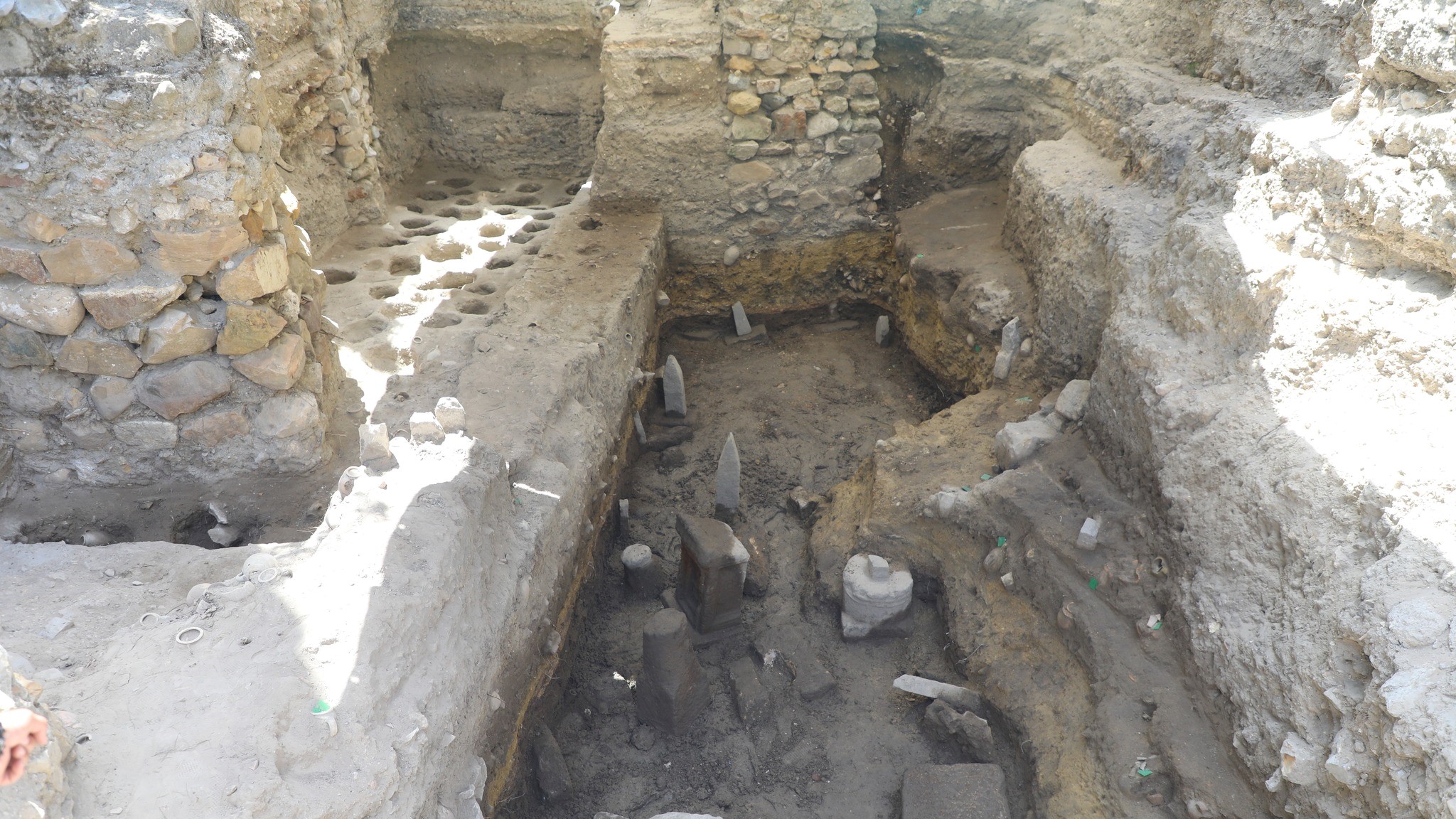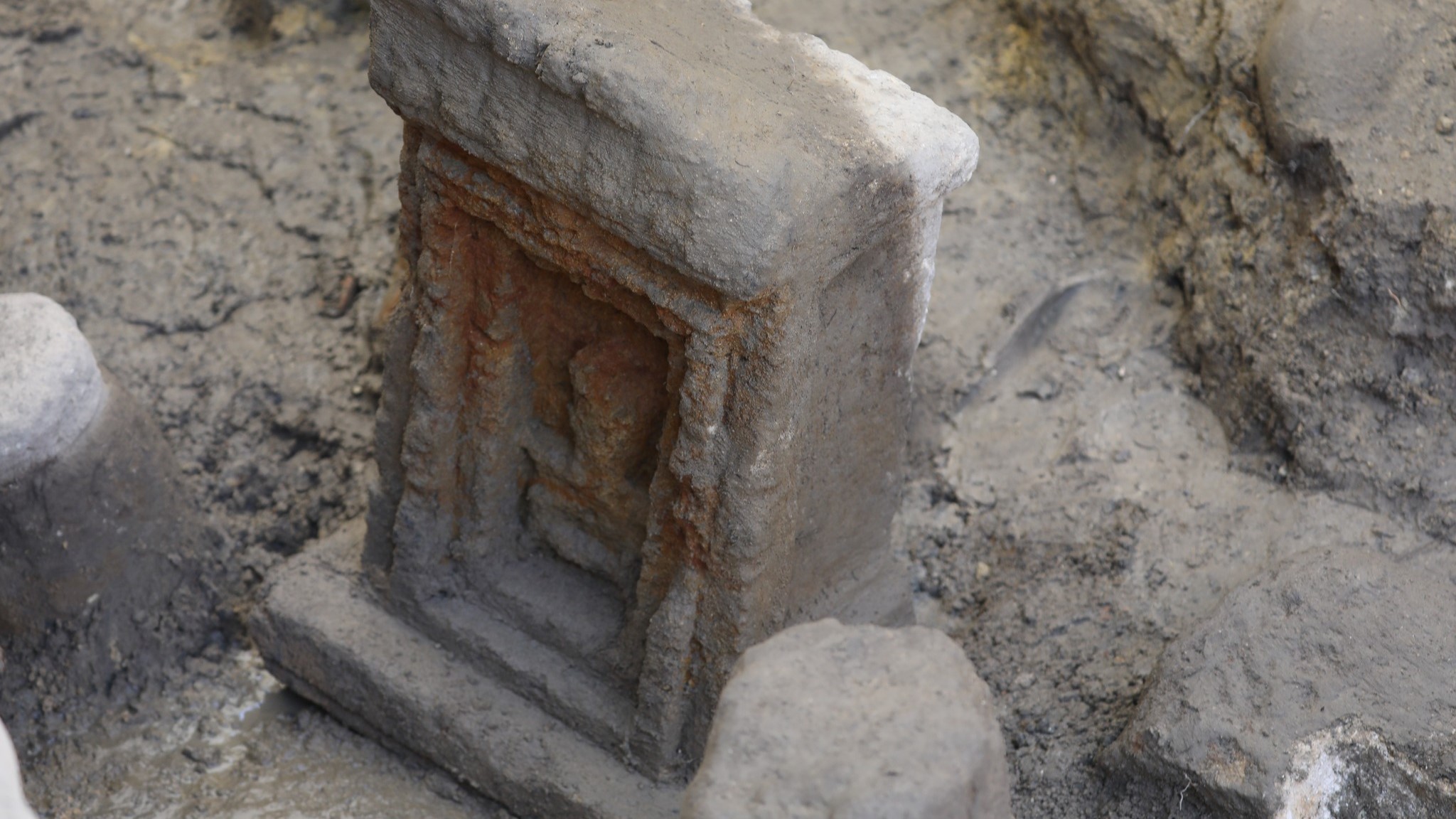
Archeologists in Tunisia have excavated rare, 2,300-year-old gold coins and urns holding the remains of animals, infants and premature babies from the ancient city of Carthage.
The researchers discovered the burials and five gold coins near the ruins of the temple of Tafat El Bony, which sits on a hill on the outskirts of Tunis. The temple was once a countryside monument dedicated to the deities Baal Hammon and Tanit, Tunisia's Ministry of Cultural Affairs said in a translated statement on Facebook.
Carthage was a powerful city-state founded by the Phoenicians — a people from the eastern coast of the Mediterranean, also known as the Levant — in the ninth century B.C. The city flourished in the sixth century B.C. and developed into a great trading empire with influence over much of the Mediterranean basin. Carthage and the Roman Republic became major rivals and fought during the lengthy Punic Wars between 264 B.C. and 146 B.C., which ended when the Romans destroyed the North African city. A new Roman Carthage was built over the ruins, and the remains of both are today listed as a UNESCO World Heritage Site.
Related: 2,000-year-old gold treasure from Iron Age tribe unearthed by metal detectorists in Wales
The newfound gold coins measure just under an inch (2.5 centimeters) in diameter, according to the Tunisian broadcaster Shems FM, and depict the ancient goddess Tanit — a symbol of fertility and motherhood for the Carthaginians.

The coins are a rare discovery "reflecting the richness of that historical period and affirming the cultural value of Carthage," Ministry of Cultural Affairs representatives said in the statement.
Wealthy Carthaginians likely left the coins as a gift for the gods, archeologists said, but it remains unclear whether the buried infants had been sacrificed or died of natural causes. Over the past century, excavations in Carthage have unearthed thousands of tombstones and urns containing the remains of newborn babies and children up to age 4, which some experts believe could have been sacrificial offerings.
"Archaeological, literary, and documentary evidence for child sacrifice is overwhelming," Josephine Crawley Quinn, a professor of ancient history at the University of Oxford in the U.K., said in a 2014 statement. "Perhaps it was out of profound religious piety, or a sense that the good the sacrifice could bring [to] the family or community as a whole outweighed the life of the child."

Passages in the Christian Bible describe child sacrifice to the Carthaginian deity Baal Hammon, and Greek and Roman tales also recount gory scenes of infant killings, but close examination of remains found at a suspected sacrificial ground suggested it was a regular cemetery for babies and fetuses, Live Science previously reported.
Some experts believe the urns and tombs discovered in Carthage over the past century are the vestiges of burials for children who died of natural causes.
But these remains are mostly cremated, and burning stillborn or dead babies would require precious wood, which the Carthaganians desperately needed for other purposes, said Patricia Smith, a biological anthropologist and professor emerita at the Hebrew University of Jerusalem, who was not involved in the new finding.
"The Carthaginians were seafarers; they needed wood for ships, they needed wood for cloth, they needed wood for their tools," Smith previously told Live Science. It is therefore likely Carthaganians only used wood resources to cremate infants as a sacrificial ritual, she said.







